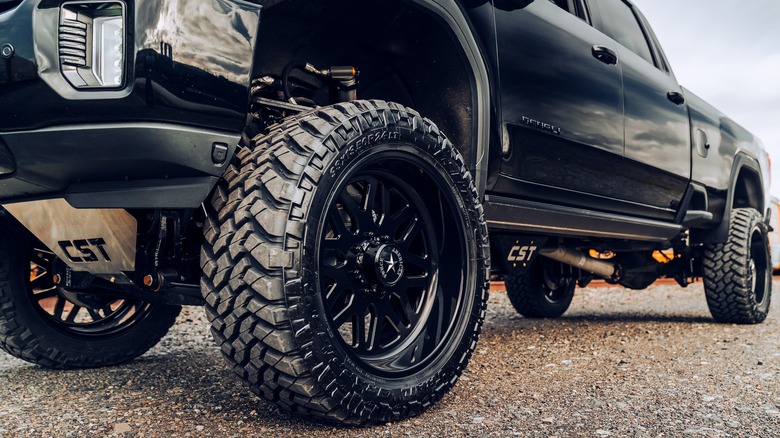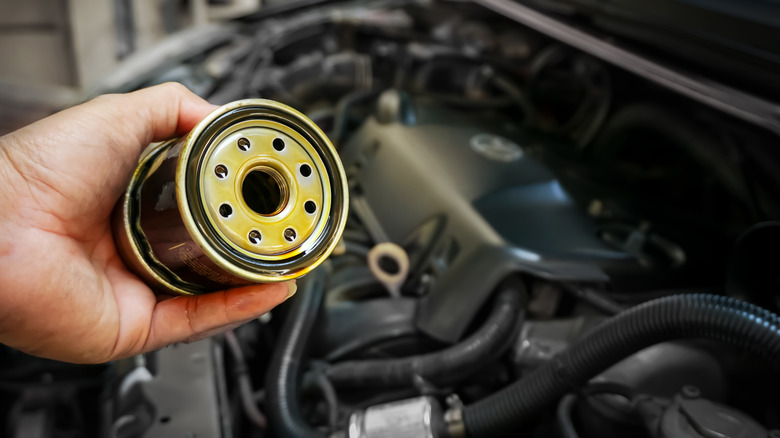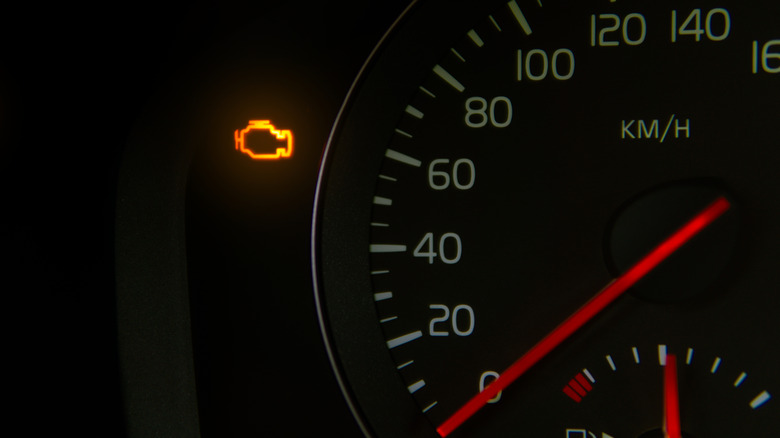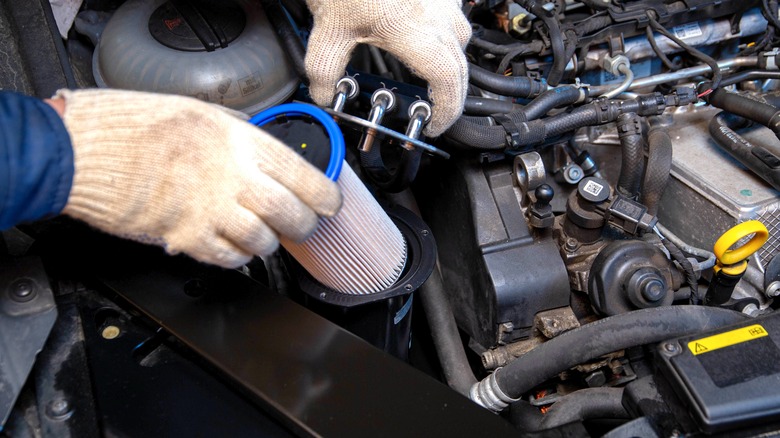3 Signs That Your Diesel Fuel Filter Needs To Be Replaced
A big part of keeping your vehicle running in the best shape it can for a long time is keeping up with routine engine care. This applies to your compact car and your diesel truck, so you don't want to neglect things for too long. One such example is your diesel fuel filter. Not everybody knows the signs of when it's time to replace a filter, but once you know what to look for, it becomes easier to pinpoint.
Some of the issues are more obvious than others, and changing out a filter is something you can do at home if you know what you're doing. Before you slide under your truck and start draining your oil for a replacement, you'll want to figure out if it's something you need to do beforehand. There are several diesel engine tips maintenance tips to know, and one is to replace the fuel filter every 10,000 to 25,000 miles.
Your vehicle is shaky while idling or at low speeds
If your truck suddenly feels unstable while idling, it might be a sign it's time to change the filter. The reason it could feel this way is the filter isn't letting enough fuel get through, which means it could be filthy and clogged as a result. The same thing applies to instability at low speeds, like leaving your home or accelerating from a stop sign or stoplight. Another sign your filter could be clogged is your vehicle running fine once it gets going to higher speeds.
Uneven fuel distribution is a telltale sign that something's wrong, so if you're experiencing any of these symptoms while driving your diesel truck, the fuel filter could need a swap. Of course, it's difficult to tell if that's the reason your truck is idling weirdly, but it's a very common reason why that's the case. If you're within the recommended window to change out your filter, it's best to take a look.
Your vehicle struggles to start
Engine trouble is tough to diagnose without taking your vehicle to a mechanic, but one reason a diesel engine might not start up is due to its filtration. Just like having issues with idling and low speeds, your engine can have difficulty starting if fuel isn't properly flowing or not getting in at all. You might even run into the problem of fuel becoming contaminated, a common problem diesel engine owners face. An old fuel filter could easily be the culprit here, but it's important to note things like defective nozzles or air leaks could also be the problem.
This is another situation where you'll want to check the mileage on your vehicle and see if you're within the period where a replacement filter is recommended. If you are, there's a chance that's your culprit. If that's not your issue, you could be staring at an expensive repair bill, so it's best to hope it's as simple as getting a new filter put in. Whatever the case is, a struggling engine is typically something you'll want to get looked at as soon as you can.
Your check engine light is on
Your check engine light can mean a variety of things, but your diesel fuel filter could be the cause of it. If you pick up a code reader to figure out what's plaguing your engine, it can save you a lot of trouble as it lets you pinpoint exactly what the issue is, and you can pick something up from Harbor Freight for $34.99. If the code is "P0171 System Too Lean," you might be looking at a bad fuel filter as the culprit.
Keep in mind your check engine light won't always flick on when there's a problem with the filter, so if this is what you're relying on, you might start noticing symptoms appear far sooner. This option will only be effective if you have the reader tell you what your check engine light means as well, so it'll require you to spend some money where the other signs are easily recognized.
How to change your diesel fuel filter
If you have to change your diesel fuel filter, you can do it at home without having to spend money on a mechanic. Before you get started, you'll want some sort of eye protection, as getting oil in or around your eye isn't good. You'll also need to find out where your filter is, and you can typically find it in one of the lines coming from the fuel tank. Depending on the vehicle, there might also be a secondary filter near your engine that can be changed. You'll want to check your owner's manual for the exact location.
From there, the process is simple enough: All you need to do is grab something that disconnects the fittings holding together the fuel line. You can pick up an aluminum disconnect set for around $24.99. These should prevent a leak from happening during the process.
Once you have sealed up the line and removed your filter, the only thing left to do is replace it. Filters themselves are quite cheap, as you can find one for around $30 or even cheaper on Amazon, but they can also cost up to $200. If you don't trust yourself with the process, you can always take it to a mechanic and have it professionally done—but that'll be a lot more expensive.




